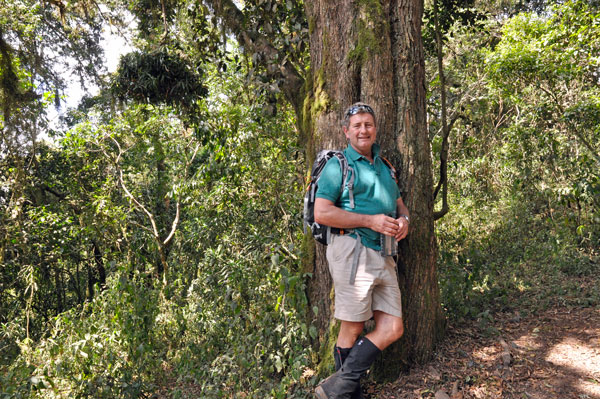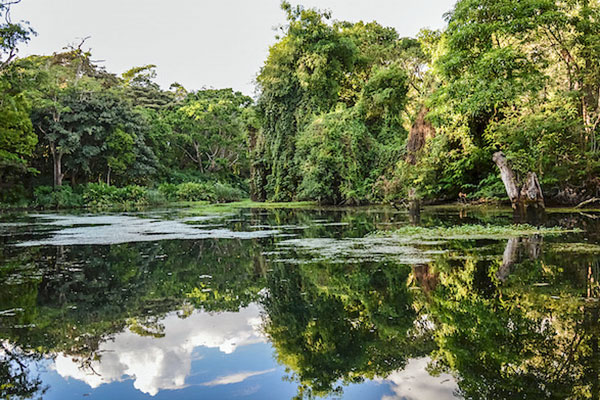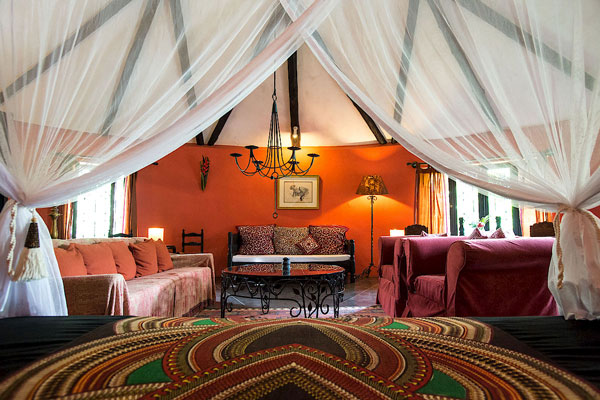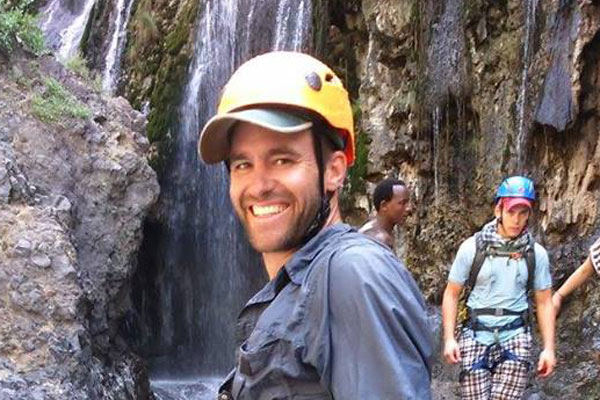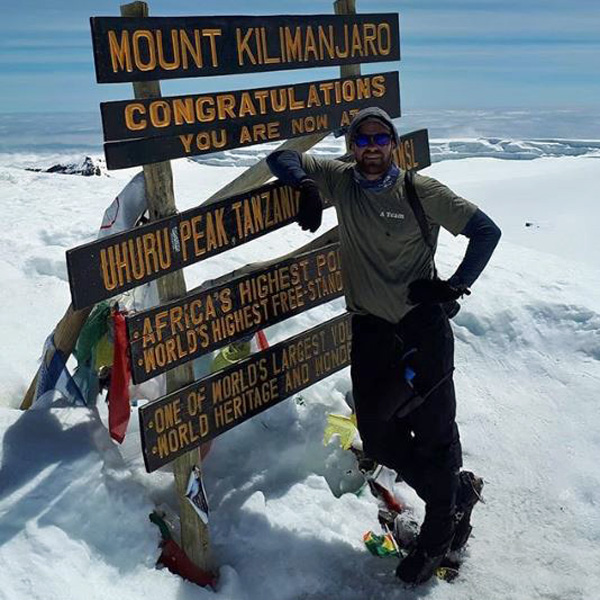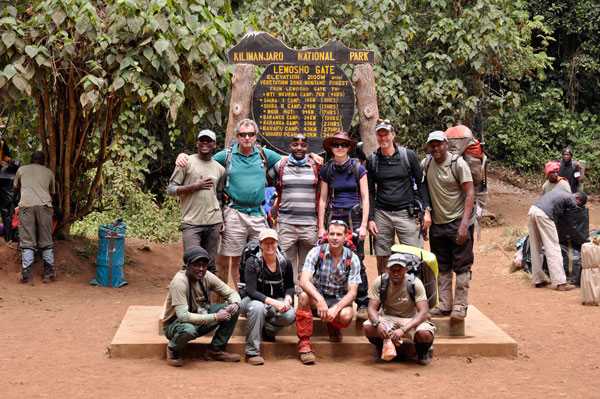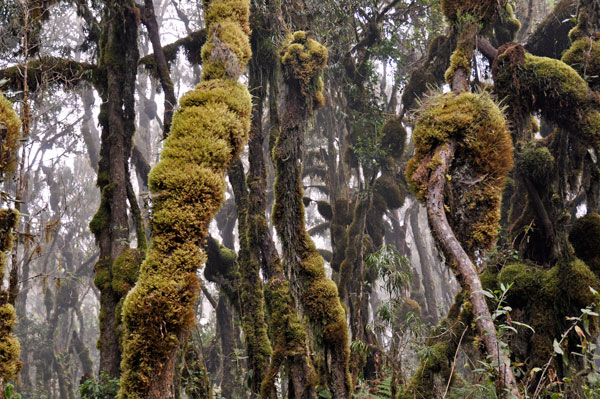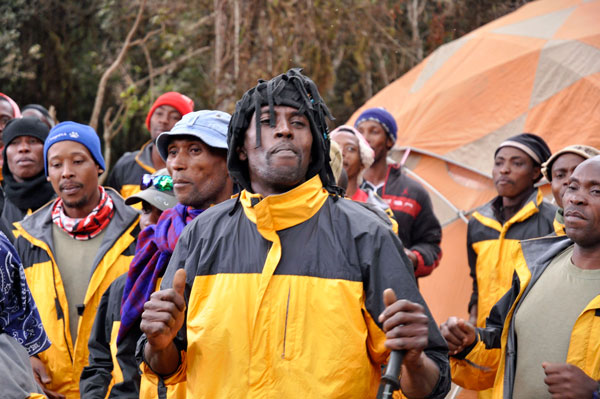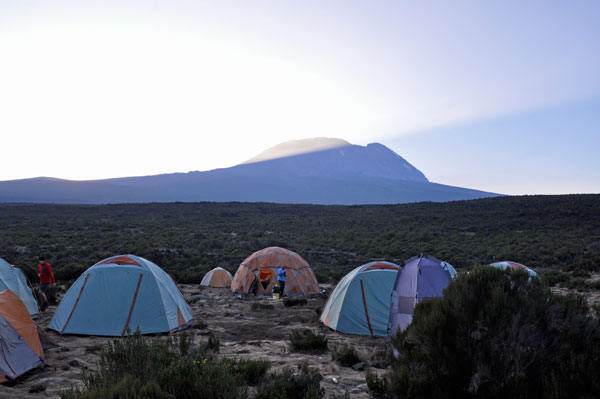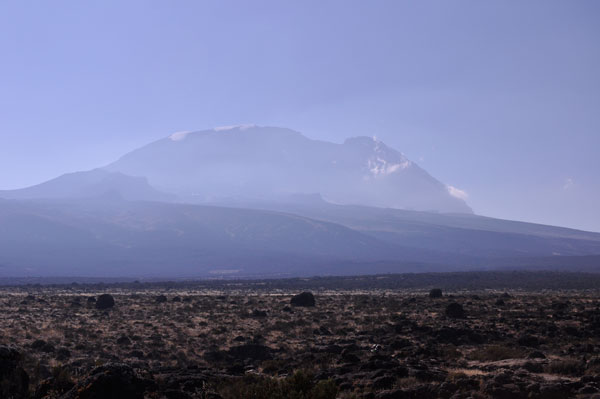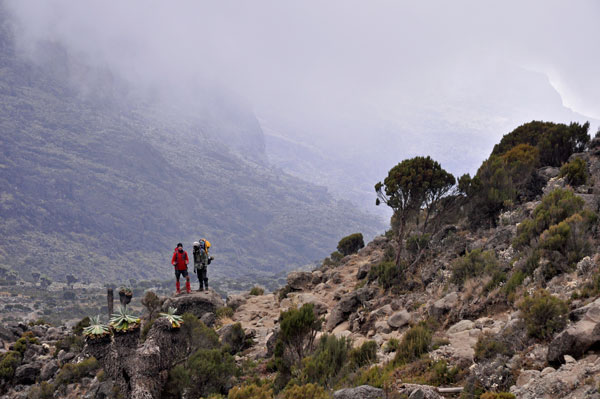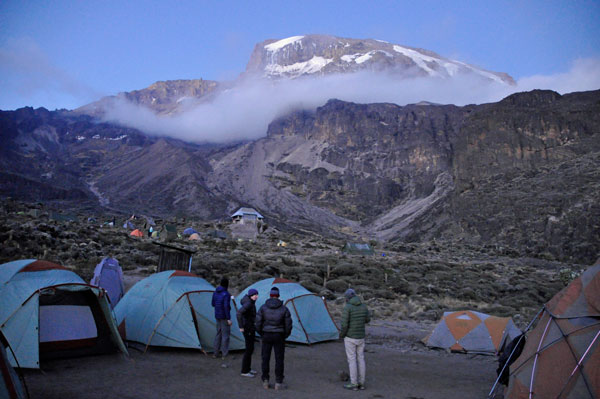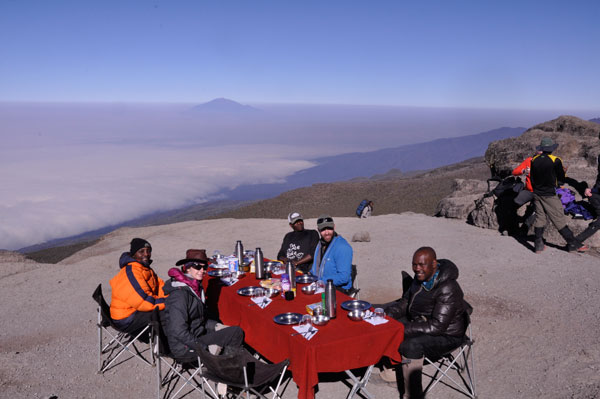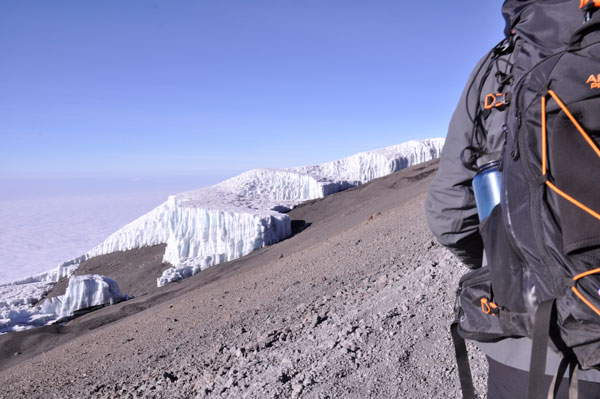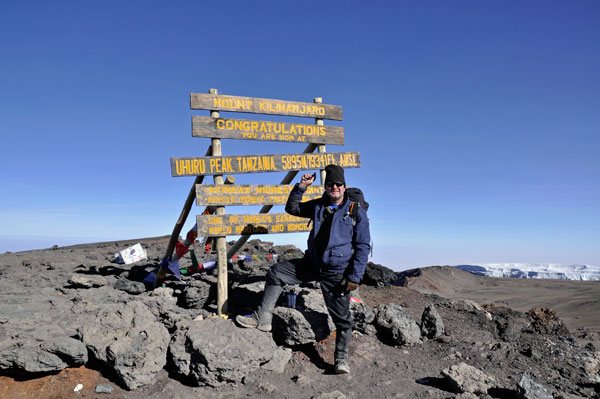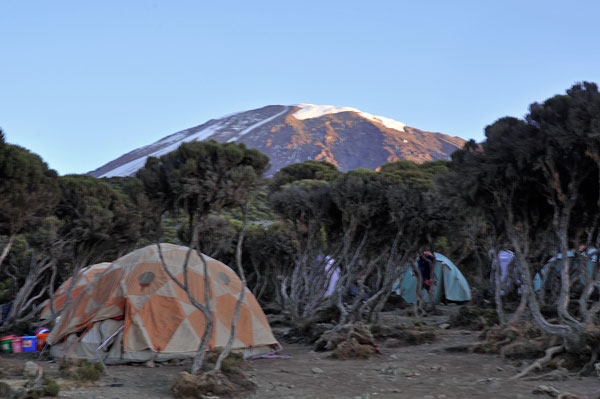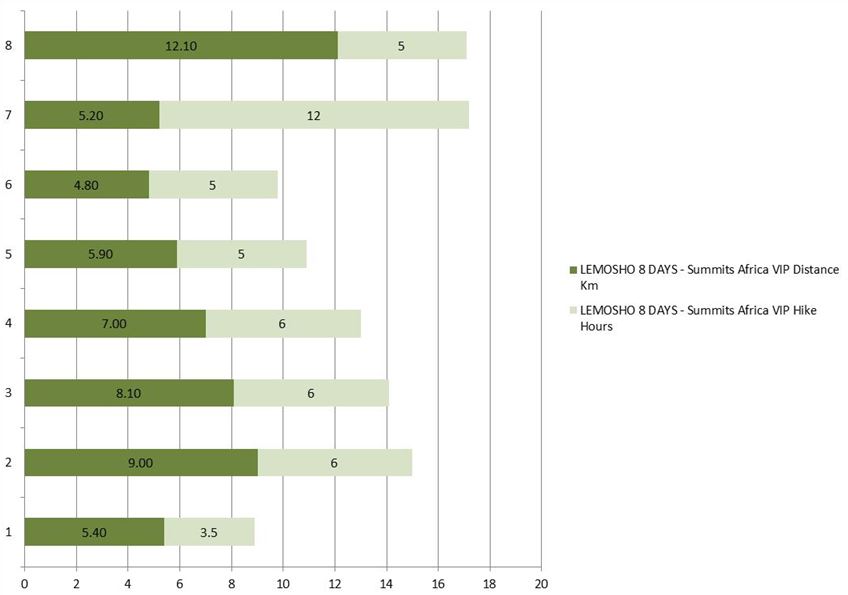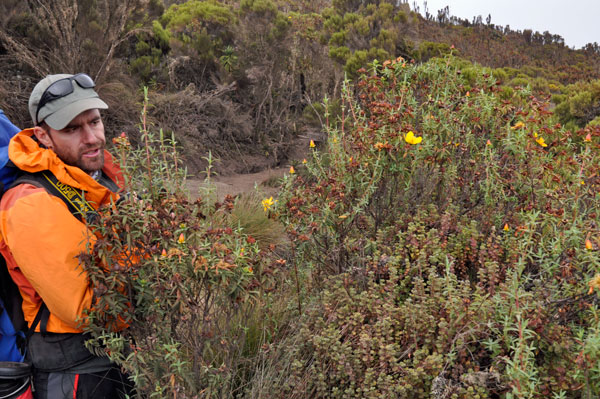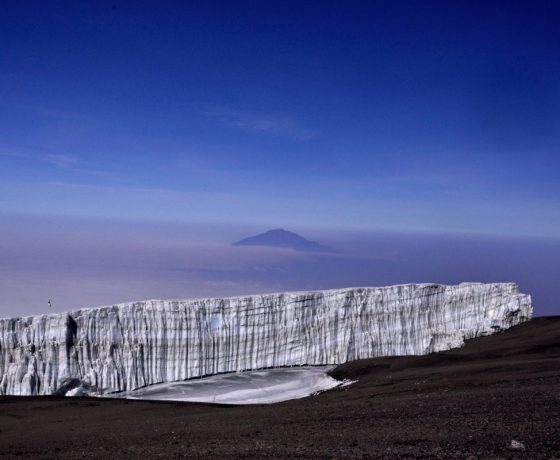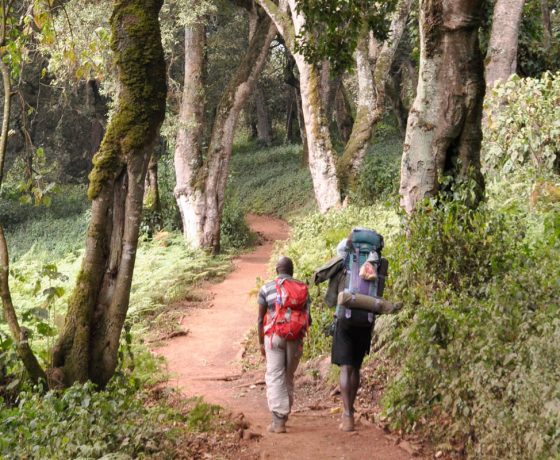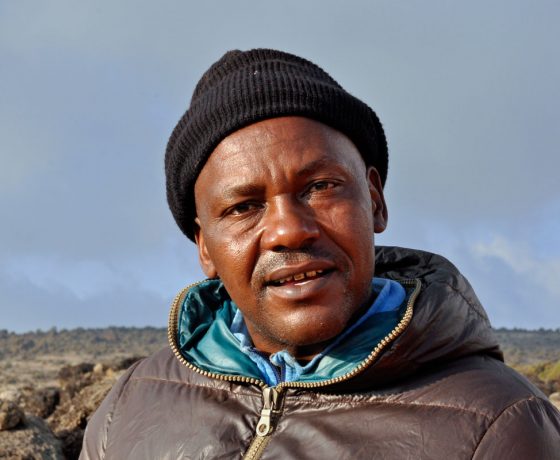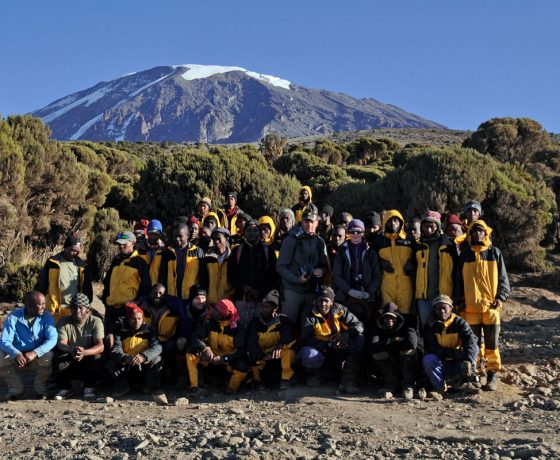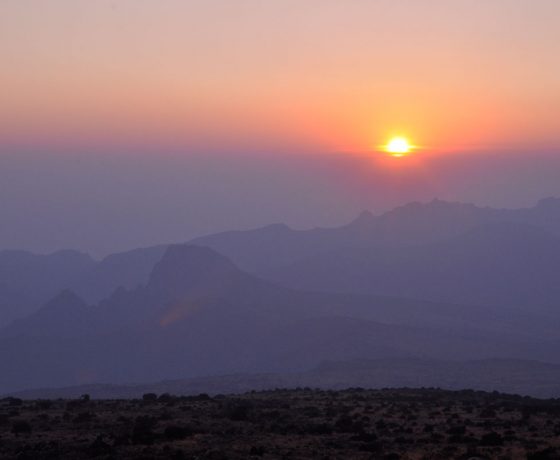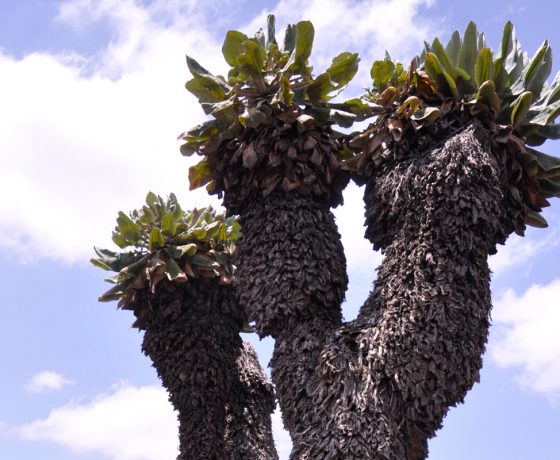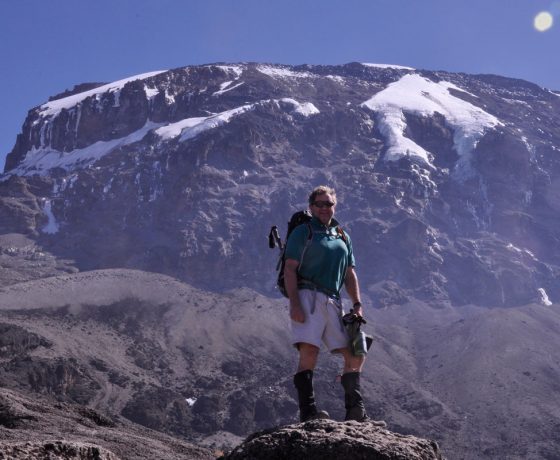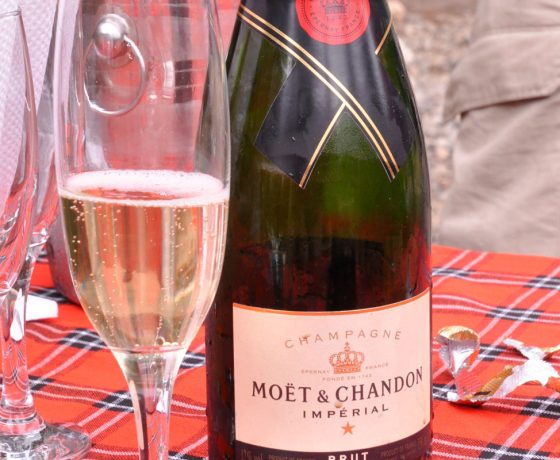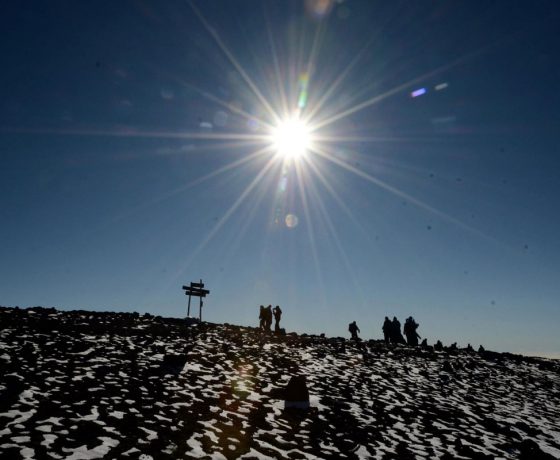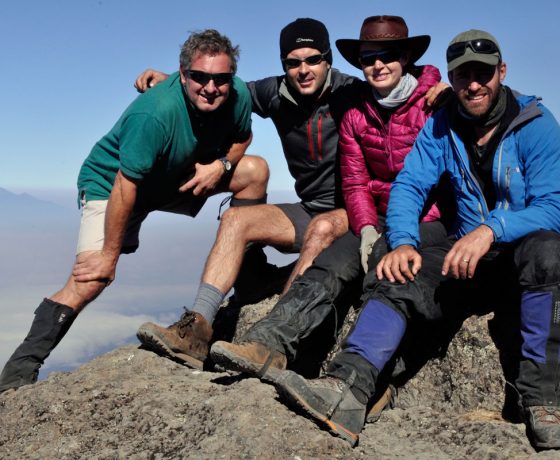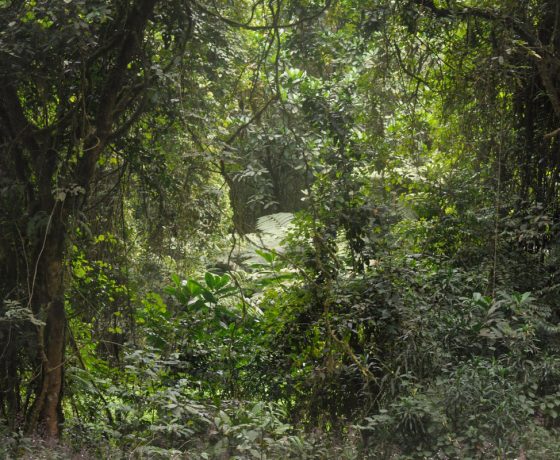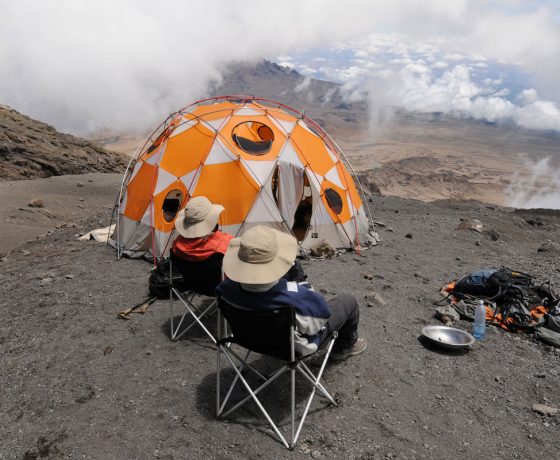Kilimanjaro VIP Lemosho Route
Francis Naumann first climbed Kilimanjaro 20 years ago. This trip report from his second climb, in September 2016, is a fascinating read for anyone considering a trip up Africa’s tallest mountain.
Kenya Airways works fine for getting to Kilimanjaro, although arriving in Nairobi at 5.00am feels really early. The onward connection is fine, even though you have to go through security between arriving and getting to the gate for the onward flight.
You’re asked to produce your Yellow Fever certificate as you enter the terminal. Complete the paperwork for a visa, hand the form in with your payment, then move on to the visa desk, and then to the immigration officer who stamps your passport – three stages seems a bit crazy but it’s all pretty easy.
Ngare Sero Mountain Lodge
Owned and managed by Tim and Katya Leach, it’s a 40 minute drive from the airport, up the side of Mt Meru. It’s a lovely lodge, an old colonial farm in a large patch of natural forest with big lawns and gardens, some huge and ancient trees, and a river flowing from a spring in the grounds. Lush, green, cool, shady, and altogether very appealing.
The rooms were once the workers’ cottages, and are in a row of 10. There’s plenty of room, a large verandah with a day bed, decent beds, big bathroom with shower and bath, enclosed loo, and 24 hour electrics.
The main lodge has a shop, bar, sitting room, dining room, log fires, etc. It’s cozy and friendly rather than luxurious, feels like a farmhouse. Food is grown on the farm as much as possible, or bought from local villages as and when available. It’s creative and well done home cooking, lots of flavour, plenty of fresh veg, and really good service too. There are a number of outside spaces for meals or relaxing, some of which are covered with a sort of shade cloth, very effective too. It’s not stylish, luxurious, or smart, but is a really nice, friendly and homely introduction to Tanzania in a really great setting. I loved it.
Ake Lindstrom who runs Summits Africa, and in charge of our climb, came to the lodge with Joseph Kumbau our head guide, and his new office manager Laila, who is excellent. Joseph inspected all of our kit, and Laila gave the briefing.
Day 1 – Big Tree/Forest Camp
We left at 9.30am the following morning. It’s about a two hour drive to the Londorossi gate into Kilimanjaro NP. Interesting change in climatic conditions as the drive progresses, as you move further into the rain shadow on the western side of the mountain – 30 years ago the lower slopes of the mountain was one of the most productive wheat growing regions in east Africa, with two harvests per year, but now it is too dry for that, and it’s just a single harvest each year.
Ake advises people to take passports, money, flight tickets, with them up the mountain, since if you do get evacuated you need them.
At Londorossi Gate you have to show or know your passport details, and everyone has to register with National Parks. Porters’ loads are weighed here too, and any final amendments made. Ake’s climb crews all have a uniform supplied, and are well turned out compared to all the others we see; t-shirts with A Team on them, black and yellow waterproof coats and trousers. All have proper walking boots, and decent backpacks.
We had lunch at Londorossi, and then it was a 20 minute drive round to Lemosho gate. There was a family of colobus monkeys in the trees close to the gate, which were nice to see. Porter loads were weighed again for any that looked too big to the TANAPA guys on duty.
We then set off to walk to Big Tree Camp, which took about three hours. This is one of the most beautiful parts of Kilimanjaro with forests of very big hagenia, African holly, cedar and juniper trees; lots of colobus and blue monkeys, magnificent plant life and flowers, and plentiful birdlife too. It’s a gradual climb, some steeper bits which are almost a scramble, but a really good introduction to life on the mountain, the guides and crew, and the way that Summits do things.
Big Tree or Forest Camp, is not especially spacious, being tucked into the forest on a narrow ridge. We were perhaps unlucky to have to share it with several other groups, but we had the best site there, and it was no problem.
The crew were in full voice as we arrived, singing and dancing to celebrate our arrival and welcome us to camp, great fun, and a really good way to finish the day’s travel. It took a while for Joseph, our head guide, to calm them down, and get the camp orientation under way. We were introduced to the chemical loos, the bag shower, the mess tent, and camp life in general. Dinner is reasonably early, at 7 – 7.30pm each evening. Bed at about 9pm, and tired enough to sleep surprisingly well.
As a rule the following principals apply any time we arrive in camp:
- Hot water, tea, coffee, hot chocolate, snacks and water are always ready in the mess tent.
- Meals are always three courses, with one or more of them cooked.
- Fresh fruit, veg and meat are served as much as possible, with a really good balance of carbohydrate, protein, fibre and fruit.
- Hot water for a shower can be produced on request.
Walking distance: 5.4 kms, started at 2384m and finished at 2797m, 3 ½ hours walking through deep forest.
Day 2 – Shira Camp
Everyone is woken by the camp manager with either tea or fresh cafetiere coffee, and a bowl of hot water for a quick wash. Bacon and eggs for brekkie, and then off we go. We get up and on the trail before most other groups every day of the climb. Ake is a firm believer in using as much of the day’s light as possible. Get going early and you have more time to go slowly, enjoy the mountain, and relax on arrival in camp. We left the forest within the first hour, and then climbed steadily through the heath zone, and out onto the moorland not long before we arrived at Shira Camp.
During the walk, we stopped for water refills, snacks, and to let everyone gather and chat for a few minutes. The guides carry extra water with them at all times. About 500 metres from camp the porters come back to meet us, and take packs from us. A really nice touch, and a great way to arrive in camp.
After lunch, and a bit of a rest, we went for a short and gentle walk to learn more about the animals, birds, vegetation and geology of the Shira Plateau. Back to camp for a game of cards after sunset, and dinner at 7.30pm. Bed at 9pm or so again. It’s noticeably colder here, but the sleeping bag keeps it at bay.
Walking distance: 9 km, max altitude 3545m, 6 hours walking.
Day 3 – Shira One Camp
The camp site man left at sunrise, striding off to Shira One to bag the best pitch – it’s another thing that sets Summits apart. This guy heads off before anyone else has woken up some days, to arrive in the next site before anyone else does. Works a treat.
A good cooked breakfast, loads of fresh coffee, and we’re off. It’s a relatively flat walk today across the plateau, with great views of Kibo and the Shira cone. There are lots of signs of buffalo and other larger mammals, that you might not expect at such a height. Plenty of birds, and the first tree senecios too.
We arrive in time for a late lunch, a game of cards, and then a bit more uphill walking, gaining an additional 200 metres or so before returning as the sun sets; stunning.
Shira One is used as an alternative to Moir if the lead guide thinks it makes sense to. Moir is slightly higher and further than Shira, but makes the following day a bit easier.
Walking distance: 8.1km, max altitude 4106m, camp altitude 3906, 6 hours walking.
Day 4 – Baranco Camp
This morning we have a long and steady climb to Lava Tower, which is both a lunch stop and a camp site. We have lunch there, in the mess tent which is ready when we arrive. Hot soup, followed by pasta with chicken and salad, and fruit afterwards. It’s really impressive how well organised the crew are, to get so far up the mountain ahead of us, and get everything ready by the time we arrive. We have lunch at 4,642m and then walk down into the Baranco valley, where we camp.
The descent is pretty spectacular, with beautiful plant life, a lot of watercourses and good views. The route has become busier, as we’ve joined up with Machame now.
Baranco Camp feels big and busy, because it is, but we’ve got the best spot again. It’s a stunning site, along a neck of land between two very deep valleys, with a great view down to Moshi if the weather allows through a steep sided gorge. You can also see the Baranco wall, and the western breach of Kili, if the clouds allow.
Walking distance: 7km, max altitude 4624m, camp at 3814m 6 hours walking.
Day 5- Karanga Camp
We got up before anyone else, and were up to the top of Baranco wall before most others had left camp. It looks forbidding from below and from camp, but it’s really not too bad at all. It takes about an hour and a half to clamber up it, and there’s a well-defined route with plenty of hand holds and places to step. We were met by the sight of a table dressed with Masai shukas at the top, laid for breakfast. The setting was stunning, with great views of Meru, Kibo and the onward route to Karanga. We had hot drinks and porridge, fresh fruit salad, bacon and egg sandwiches. A really great touch, and unique to Summits.
The onward walk was beautiful, with several steep descents and ascents, into and out of deep valleys with rivers and wonderful alpine vegetation, but it wasn’t long before we arrived at Karanga Camp, in plenty of time for lunch. In the late afternoon, we had a trial run of our summit ascent gear, fully clothed for it, with head torches and loaded up with water, to allow us to get an idea of what we needed to do to keep warm, to be able to drink, and to walk in the dark. It’s another idea that’s unique to Summits, and a very good one. You do feel well prepared come the morning of the summit attempt, and there’s no dithering about what to wear.
Not far from camp we crossed a stream which is the final water source on this side of the mountain. Water is collected here, filtered and treated so it’s safe to drink.
Walking distance: 6km, max altitude 4226m, camp altitude 3907m, 5 hours walking.
Day 6 – Kosovo Camp
It’s a relatively short but geologically fascinating uphill walk to Barafu Camp today. The scenery is stark but great, high altitude desert zone, with very little vegetation now. The ravens and chats still accompany us and we also see a couple of lammergeiers (bearded vulture). The final part of the walk up to camp is very steep, but it’s all excellent preparation for the summit. We stopped for a rest, drinks and loo at Barafu, and carried on for another hour to Kosovo Camp, which is another 200m up the hill. This is a terrific idea, and something Summits try to do for all climbs if people can cope with it. Barafu is huge, very busy, rocky, steeply sloping and very smelly. It’s a hard climb to Kosovo, with a lot of scrambling up very steep rocky slopes. The camp crew came back down the hill from Kosovo to meet us and sing us into camp, which was awesome, made a huge difference to some really tired people, and was also very emotional. Gaining the additional 200 metres saves an hour of hard climb in the morning, and you also camp somewhere even more spectacular. Dinner at 7pm and bed by 8pm.
Walking distance: 5km, max altitude 4,897m, camp altitude 4,897m 5 hours walking.
Day 7 – Summit
We rise at 1.30am, and leave camp at 2.00am. I slept surprisingly well, woke only once for a pee and a drink. The extra hour of sleep is handy, and we set off in good spirits. However you do the final ascent it’s a hard slog up the side of Kibo. At least going via Stella Point you don’t have to contend with so much scree as on the Marangu route to Gillman’s Point, and you also have an hour less traverse round the crater to get to Uhuru peak.
I was surprised how warm it was, and was shedding layers as we climbed. Ake’s insistence on one guide or crew member per climber is great, and allows you the confidence to stop when you need to, to ask for help if needed, and have someone to talk to. During this climb the guides and crew got stuck into an intense discussion about religion and politics, which was quite entertaining even though all in Swahili. That concluded, they then started singing again, which was another wonderful lift to our spirits.
It took about four and a half hours to get to Stella Point, by which time the sun was well up. We stopped to take off a layer, have a cup of tea or coffee, and something to eat, and then carried on very slowly to Uhuru Peak. We arrived here at about 8am, spent 10 minutes taking pictures, and then set off down the hill again. It takes very little time to get back to Kosovo, about two and a half hours in all, but it’s flipping hard on the knees as you go down.
We stopped at Kosovo to rest and then have a big brunch, and pack our gear. We set off at 1.00pm to walk down to Millennium Camp, arriving there at about 5pm. It’s a relentless downhill yomp, rocky, steep in places, and hard on legs and knees. Ake prefers to stop at Millennium, which is at 3838m, instead of Mweka which is another 200m lower. He has a couple of reasons, one of which is the great views of Kibo and the forest below. The other becomes apparent the following morning; it’s a really steep and hard descent to Mweka camp, and not so good on tired legs.
Walking distance: 12km, max altitude 5893m, camp at 3828m, 12 hours walking.
Day 8
We set off after a good breakfast and handing out tips, at about 7am. It took a good two hours to get to Mweka, which reinforced the sense of Ake’s policy of stopping at Millennium.
We reached Mweka gate at about midday, signed out of the park, had farewell songs from the crew, and a glass of champagne, not cheap rubbish either, Moet. The crew all said goodbye, and we set off in a Land Cruiser back to Arusha. Moshi is at the foot of the mountain here, and it’s a busy town, with all of the traffic from Dar to Arusha and further west coming through it. It seems to take an awful long time to get back to Arusha.
Walking distance: 12km, max altitude 3828, Mweka gate 1650m, 5 hours walking.
Summary
I can’t remember the last time I went without a beer for a week; must have been Mauritania in 1998, and getting back down to a proper bed, clean clothes and a shower was very welcome. This was an outstanding trip, and it held its own with canoeing in Mana Pools, riding in the Okavango Delta, meeting meerkats, chimp tracking, and seeing gorillas.
It’s a very beautiful mountain, with fascinating flora and fauna, complex and intriguing geology, and reaching the summit is a very rewarding challenge for anyone who wants to do so. I did it, and you can too.
Ake’s knowledge and experience of mountains of much higher altitude than Kilimanjaro, and a scientific understanding of how altitude affects people, feeds into every facet of a Summits climb.
- Medical knowledge and first aid training
- the best first aid kit on the mountain
- Client oxygen and pulse monitoring twice per day
- Diet, drinks, provisioning,
- Crew and client equipment
- Porter and guide training
- Hugely experienced and capable crew
- Crew equipment and clothing
- An insistence on checking climbers’ kit before departure and before the final ascent
- Crew member whose sole job is to secure the best pitch in each campsite
- A flexible approach to camp selection, dependent on how the party are coping physically
- Clever planning to make things as easy as possible on tough days
- lovely little touches like breakfast at the top of Baranco wall
- A crew who love what they do and go the extra mile for clients
Ake has more than 300 people to call on for climbs, and they all have real pride in what they do. Turnover is surprisingly low, and the few that leave are usually not much good.
The Lemosho route is good for clients because it conditions your body to the altitude, allows your legs to get stronger by doing some steeper climbs before the final ascent, has the best scenery and variety of habitats and views on the mountain. I’ve climbed via Marangu and can honestly say it was dull in comparison.
We really felt ready for the challenge when the day arrived.
On a VIP climb you have the following;
- Accommodation and meals in Arusha before and after the climb
- Three man tents, big enough to stand up in, for 2 people during the climb
- Camp beds instead of just mattresses on the floor
- Excellent sleeping bags with liners
- A tent with a chemical loo, so you don’t have to use the public loos in the camp sites (they are pretty awful in most cases)
- A wash tent and the option of a hot shower each day
- Amazing food – truly, we had fresh fruit and vegetables every day, in fact for every meal
- 3 cooked meals per day, even breakfast and lunch feature something hot and freshly cooked – food is resupplied part way through the climb, so there is always a supply of fresh meat, fruit and vegetables
- Hot drinks all day – tea, coffee, hot chocolate etc all ad-lib
- A plentiful supply of safe drinking water, with additional supplies carried during the walk each day
- Snacks in camp and on the walks each day
- Comprehensive safety kit, and a unique twice daily monitoring system to ensure clients are staying healthy and coping with the increasing altitude.
- A spacious and cosy dining tent with tables and chairs
Essentially, you just turn up with your own clothes and everything else is taken care of. We had a team of 48, including three guides, looking after six of us.
